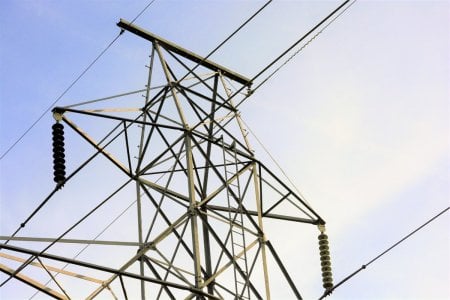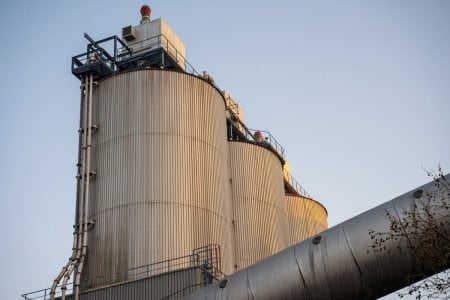Could your power bill skyrocket? Alarming claims about the energy transition suggest trouble ahead
With the harsh reality of constantly rising prices, we could all use some good news when it comes to our household budgets.
But unfortunately, it seems that might not be in the cards for us any time soon.
The Australian Energy Regulator (AER) recently released its ‘State of the Energy Market’ report for 2023, which warns that Australians could face rising power prices for years to come as the country struggles to switch to more sustainable and renewable energy sources.
This is due to the transition away from coal-fired power proving more difficult than expected—with ageing power stations beginning to exit the grid as well as further delays in the construction of renewable energy projects (and the required transmission infrastructure).
While various forms of government intervention managed to delay the worst price hikes in the past year, the AER report points out that many of these issues remain unresolved.
The report states that in 2022, the federal government made a concerted effort to increase renewable energy generation to 82 per cent, with the target of reaching net-zero emissions by 2050 clearly in sight.
The report further notes that Australia is struggling to accelerate renewable energy generation quickly enough, with large projects facing rapidly rising costs.
Simultaneously, the rollout of approximately 10,000 kilometres of transmission infrastructure needed to transport green energy has been delayed due to sustained community opposition.
The AER also found that alongside the closure of the Liddell power station in New South Wales (NSW), four more coal-fired power stations are scheduled to shut down in the next ten years, requiring an urgent and expensive investment in new generation, storage, and transmission capacity.
‘There are also major and urgent pressures for investments to keep pace with the energy transition and retirement of coal generation,’ the report says.
AER chair Clare Savage emphasised that despite some ‘better market outcomes this year’, challenges continue to mount in delivering affordable and reliable energy in the coming years.
‘Work still remains to address energy affordability for consumers, co-ordinate the entry and exit of generation sources and ensure the timely and least-cost delivery of major transmission projects,’ Ms Savage said.
‘These projects face challenges including escalating costs, slower than planned progress and the need to address the concerns of the communities that host them.’
The report also shows that shortfalls in electricity supply are accelerating due to the growing demand for electricity, necessitating increased generation capacity.
Additionally, the report highlights the growing influence of renewable generation, with rooftop solar output accounting for 9 per cent of total generation in 2022—a 15 per cent increase from 2021 and more than double the output in 2018.
In summary, the energy transition ahead poses a significant challenge, and it appears that we may experience further price hikes unless we find and implement effective solutions soon.
We can only hope that government initiatives, investments, and community support will guide us through this challenging period and protect our finances.
Meanwhile, the SDC team will closely monitor the news and will promptly update you on any significant developments.

Members, we'd love to hear your thoughts on this story. Are you prepared for a possible increase in energy/electricity costs? Do you think the transition to a more renewable grid is progressing too quickly, or not fast enough? Let us know your answers in the comments below!
But unfortunately, it seems that might not be in the cards for us any time soon.
The Australian Energy Regulator (AER) recently released its ‘State of the Energy Market’ report for 2023, which warns that Australians could face rising power prices for years to come as the country struggles to switch to more sustainable and renewable energy sources.
This is due to the transition away from coal-fired power proving more difficult than expected—with ageing power stations beginning to exit the grid as well as further delays in the construction of renewable energy projects (and the required transmission infrastructure).
While various forms of government intervention managed to delay the worst price hikes in the past year, the AER report points out that many of these issues remain unresolved.
The report states that in 2022, the federal government made a concerted effort to increase renewable energy generation to 82 per cent, with the target of reaching net-zero emissions by 2050 clearly in sight.
The report further notes that Australia is struggling to accelerate renewable energy generation quickly enough, with large projects facing rapidly rising costs.
Simultaneously, the rollout of approximately 10,000 kilometres of transmission infrastructure needed to transport green energy has been delayed due to sustained community opposition.
The AER also found that alongside the closure of the Liddell power station in New South Wales (NSW), four more coal-fired power stations are scheduled to shut down in the next ten years, requiring an urgent and expensive investment in new generation, storage, and transmission capacity.
‘There are also major and urgent pressures for investments to keep pace with the energy transition and retirement of coal generation,’ the report says.
AER chair Clare Savage emphasised that despite some ‘better market outcomes this year’, challenges continue to mount in delivering affordable and reliable energy in the coming years.
‘Work still remains to address energy affordability for consumers, co-ordinate the entry and exit of generation sources and ensure the timely and least-cost delivery of major transmission projects,’ Ms Savage said.
‘These projects face challenges including escalating costs, slower than planned progress and the need to address the concerns of the communities that host them.’
The report also shows that shortfalls in electricity supply are accelerating due to the growing demand for electricity, necessitating increased generation capacity.
Additionally, the report highlights the growing influence of renewable generation, with rooftop solar output accounting for 9 per cent of total generation in 2022—a 15 per cent increase from 2021 and more than double the output in 2018.
In summary, the energy transition ahead poses a significant challenge, and it appears that we may experience further price hikes unless we find and implement effective solutions soon.
We can only hope that government initiatives, investments, and community support will guide us through this challenging period and protect our finances.
Meanwhile, the SDC team will closely monitor the news and will promptly update you on any significant developments.
Key Takeaways
- The Australian Energy Regulator (AER) warns of potential higher power bills as ageing coal-fired generators exit the grid and transmission projects face delays.
- In 2022, the federal government set a renewable energy target of 82 per cent by 2030, but rising costs and community opposition hamper progress.
- The report highlights the imminent closure of Liddell in NSW and four other coal-fired power stations, necessitating urgent investment in generation, storage, and transmission.
- AER Chair Clare Savage acknowledges improved market outcomes this year but stresses ongoing challenges in ensuring an affordable, reliable energy supply, as well as the critical need to address generation coordination and major transmission projects.
Members, we'd love to hear your thoughts on this story. Are you prepared for a possible increase in energy/electricity costs? Do you think the transition to a more renewable grid is progressing too quickly, or not fast enough? Let us know your answers in the comments below!









